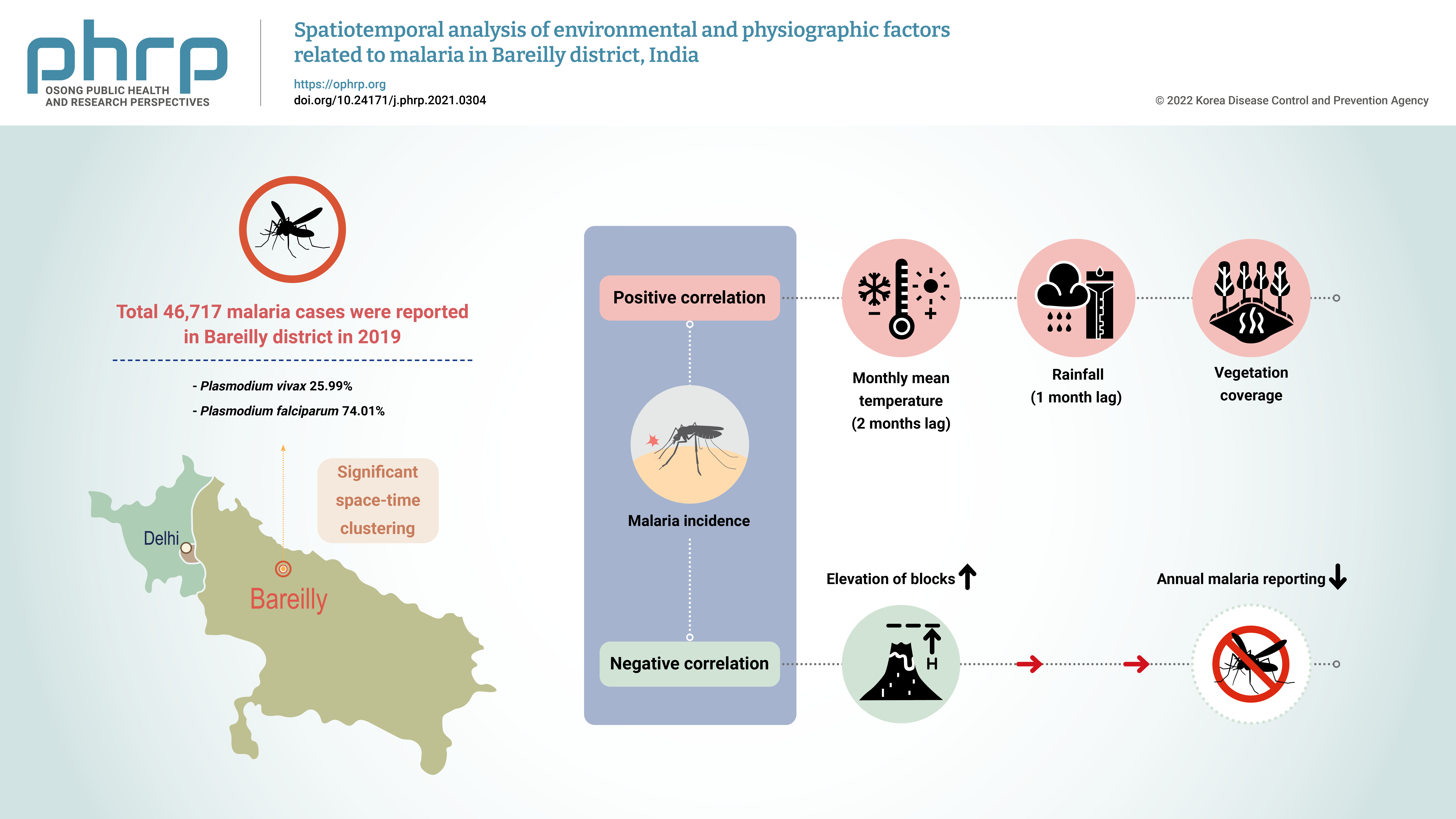Search
- Page Path
- HOME > Search
Original Article
- Spatiotemporal analysis of environmental and physiographic factors related to malaria in Bareilly district, India
- Shikhar Chaudhary, Biju Soman
- Osong Public Health Res Perspect. 2022;13(2):123-132. Published online March 31, 2022
- DOI: https://doi.org/10.24171/j.phrp.2021.0304
- 4,937 View
- 91 Download
- 1 Crossref
-
 Graphical Abstract
Graphical Abstract
 Abstract
Abstract
 PDF
PDF 
- Objectives
The aim of this study was to explore the spatiotemporal clustering of reported malaria cases and to study the effects of various environmental and physiographic factors on malaria incidence in Bareilly district, Uttar Pradesh, India. Methods: Malaria surveillance data were collected from the state health department and cleaned into an analyzable format. These data were analyzed along with meteorological, physiographic, and 2019 population data, which were obtained from the Indian Meteorological Department, National Aeronautics and Space Administration web portal, the Bhuvan platform of the Indian Space Research Organization, and the 2011 Census of India. Results: In total, 46,717 malaria cases were reported in Bareilly district in 2019, of which 25.99% were Plasmodium vivax cases and 74.01% were P. falciparum cases. The reported malaria cases in the district showed clustering, with significant spatial autocorrelation (Moran’s I value=0.63), and space-time clustering (p<0.01). A significant positive correlation was found between monthly malaria incidence and the monthly mean temperature (with a lag of 1−2 months) and rainfall (with a lag of 1 month). A significant negative correlation was detected between the elevation of blocks (i.e., intermediate-level administrative districts) and annual malaria reporting. Conclusion: The presence of space-time clustering of malaria cases and its correlation with meteorological and physiographic factors indicate that routine spatial analysis of the surveillance data could help control and manage malaria outbreaks in the district. -
Citations
Citations to this article as recorded by- Digital health: trends, opportunities and challenges in medical devices, pharma and bio-technology
Naresh Kasoju, N. S. Remya, Renjith Sasi, S. Sujesh, Biju Soman, C. Kesavadas, C. V. Muraleedharan, P. R. Harikrishna Varma, Sanjay Behari
CSI Transactions on ICT.2023; 11(1): 11. CrossRef
- Digital health: trends, opportunities and challenges in medical devices, pharma and bio-technology



 First
First Prev
Prev


